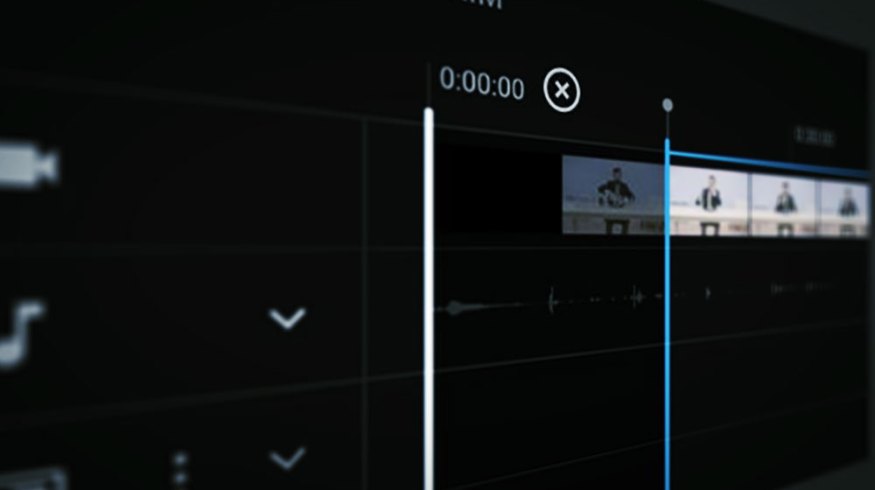
Reviewing YouTube’s New Non-Linear Video Editor
Let’s take a look at YouTube’s offerings to see how it works, some of its editing options, and if it might be of interest for certain projects.
In the short but storied history of digital video editing platforms, we’ve seen just a few familiar names reign king — Apple Final Cut Pro, Adobe Premiere Pro, and more recently, DaVinci Resolve. However, while the big giants may still dominate the marketplace, it hasn’t stopped many other third parties and platforms from launching editing applications of their own.
Some are doing it to capture the market. While others — like YouTube — are simply trying to provide a more full, robust service to their current offerings. If you’ve uploaded a video to YouTube in the past year or so, you may have noticed that the social video-sharing platform is working hard to add tons of different functionalities, controls, and analytics as its creator space continues to grow.
Now, the YouTube Studio Video Editor is finally becoming a real thing. Here’s everything you need to know about YouTube’s native editing platform.
Uploading Footage and Editing Videos
So, before we dive into the YouTube Video Editor, let’s take a moment to applaud YouTube for how far the platform has come. From what started as a simple video hosting and sharing website, YouTube has become a full-on social media platform and community. As YouTube — and its individual creators — rose in popularity and earned millions of views (and dollars), the platform has been eager to adapt more and more customization and controls for creators.
The basic principles are all the same. You shoot a video, edit it yourself, then upload to YouTube. And, not to bury the lead but, as of right now, that might still be your best option. However, along with Video Editing controls, YouTube has created plenty of functionality for working with certain types of projects, as well as better controls for trimming, adding audio and titles, as well as the all-important end screens and cards for click-throughs.
To get started, all you need to do is upload a video — or choose one you’ve already uploaded — and find the “Editor” tab in the studio.
Non-Linear Editing
I don’t know if it’s really fair to call YouTube’s Video Editor a “Non-Linear Editing System,” as you may be familiar with Final Cut, Premiere Pro, or Resolve. When you open the Video Editor, though, it looks pretty close to the part. You have your timeline. You also have your video and audio channels — plus a few others.
But, many of the basic NLE editing controls are not present. It really works more as a scrollable timeline for simple trimming, splitting, and adding elements. Let’s take a look at what’s included.
Trimming and Splitting
The most basic of editing options for working with your new or old videos is the trim. For many editors, this won’t be nearly enough to really work with a video. But, if you’re simply looking to quickly upload videos — or long-form content like vlogs or live streams — this might quicken up your workflow.
With basic scrolling and highlighting, you can trim out sections either at the beginning or end of your video. Just click the Trim button, then move the bars to highlight the space you want deleted. You can also split in the same fashion by choosing areas in the middle of your video. The timeline doesn’t adjust automatically but you can preview before you create the video.
Add Music or Audio
Going down the channel options, you can see an audio icon right below the video. Again, this isn’t a full NLE editing platform concerning audio correction. Instead, this mainly serves as a means to remove the audio track all together and add one from YouTube’s library. Which, unless you’re in a hurry to remove a ban for copyright infringement from an audio track, might not be that helpful.
Add End Screens and Elements
From there, we have End Screen controls, which are actually an improvement from before and probably one of the biggest reasons why YouTube created its Video Editor in the first place. End Screens, for those unfamiliar, are those boxes you see pop up at the end of YouTube videos, where you’re encouraged to click to see more or subscribe.
These are actually quite customizable and easy to set up. You can choose between several templates and customize which End Screens go where. Depending on your account setup, you can add cards throughout the video, as well.
Blur Faces and Custom Blurring
Finally, in another effort to help out the much less video editing savvy of the platform’s creators, we next have a “Blur” channel. This is actually quite ambitious. YouTube, like every other social media giant, is fighting hard to figure out how to manage things like privacy and copyrights.
Adding this blur functionality is one step in that direction, allowing creators a way to blur out logos, people, and faces. You have options for “blur faces” and “custom blurring,” where you can literally click on objects that YouTube will track and blur. It’s not perfect, but for a simple creator setup, it’s quite impressive.
Overall (as stated above), at this stage the YouTube Video Editor is best for first time vloggers, or those needing to quickly edit tons of videos or longform streams. However, I wouldn’t rule out YouTube simply using this as a first step, as they may build out the app much more in the future.
For more video editing and uploading tips and tricks, check out some of these articles below:












